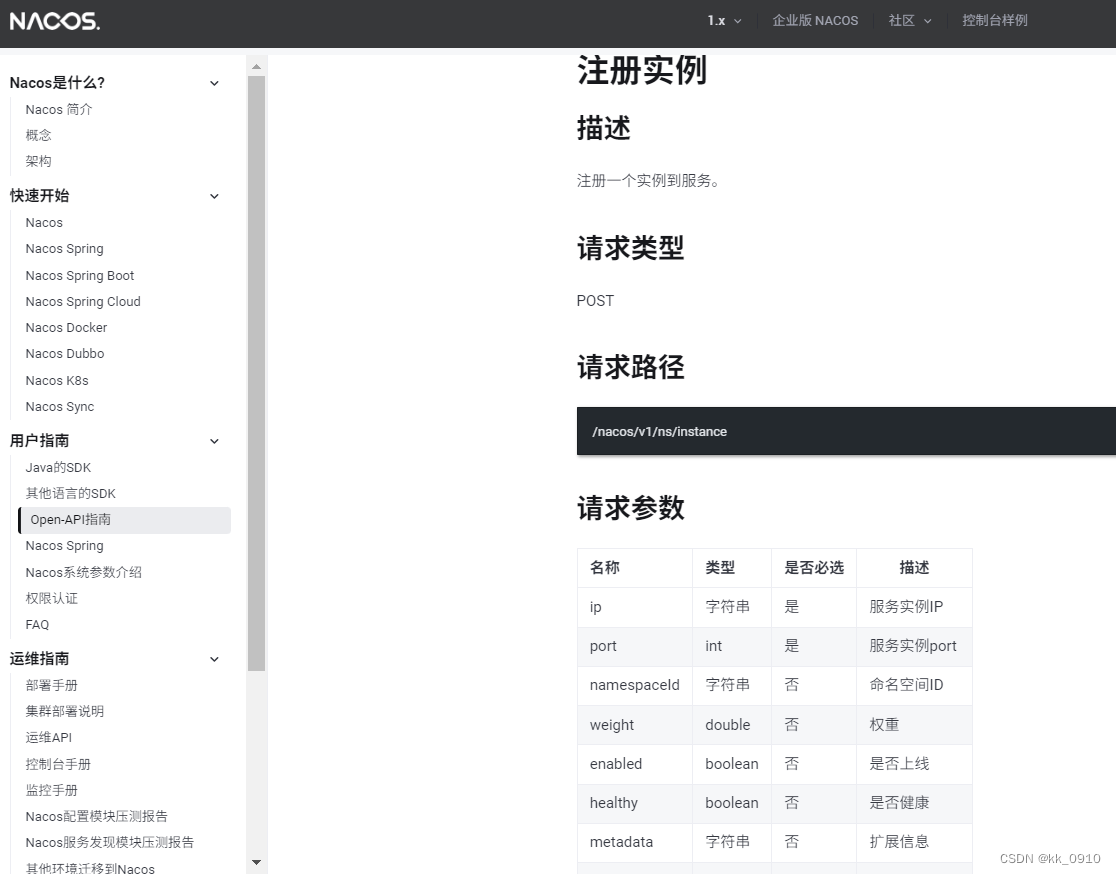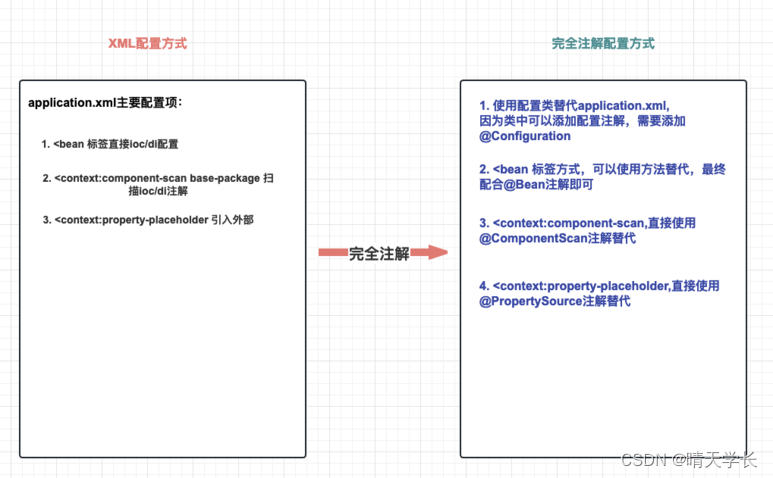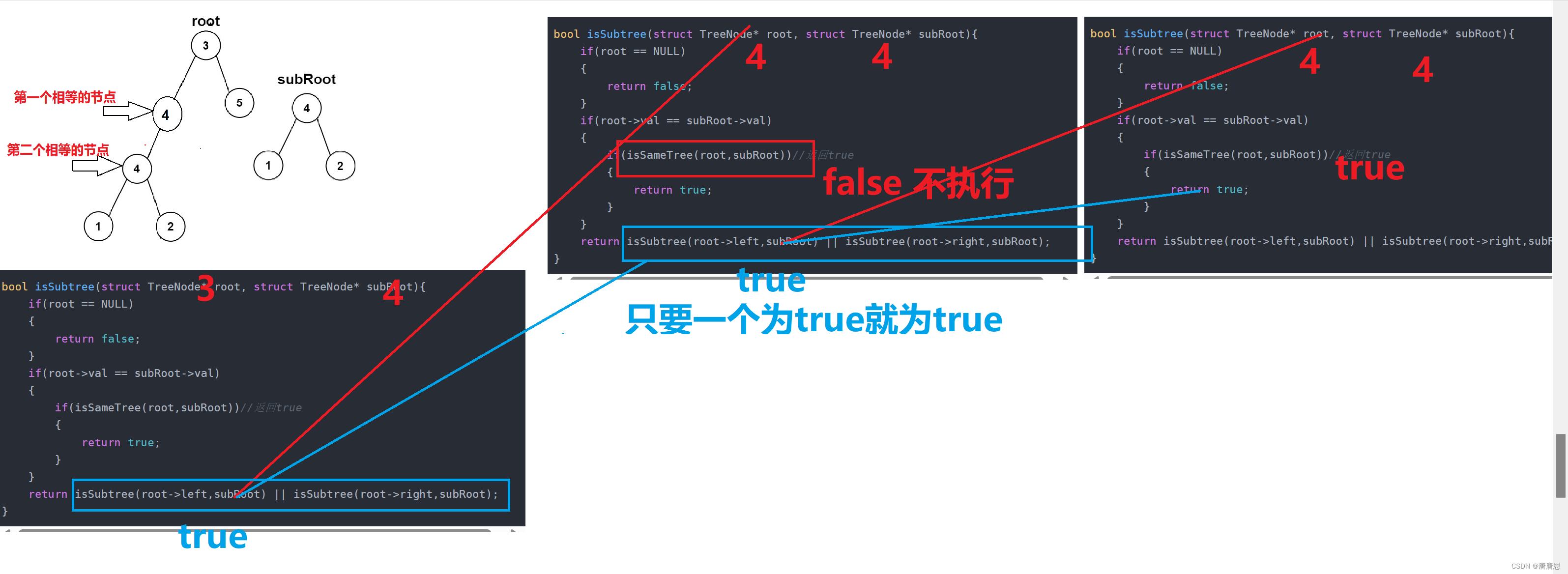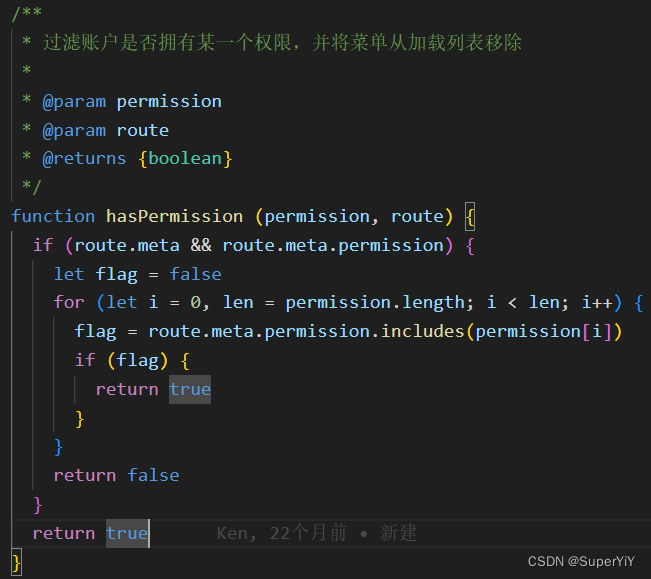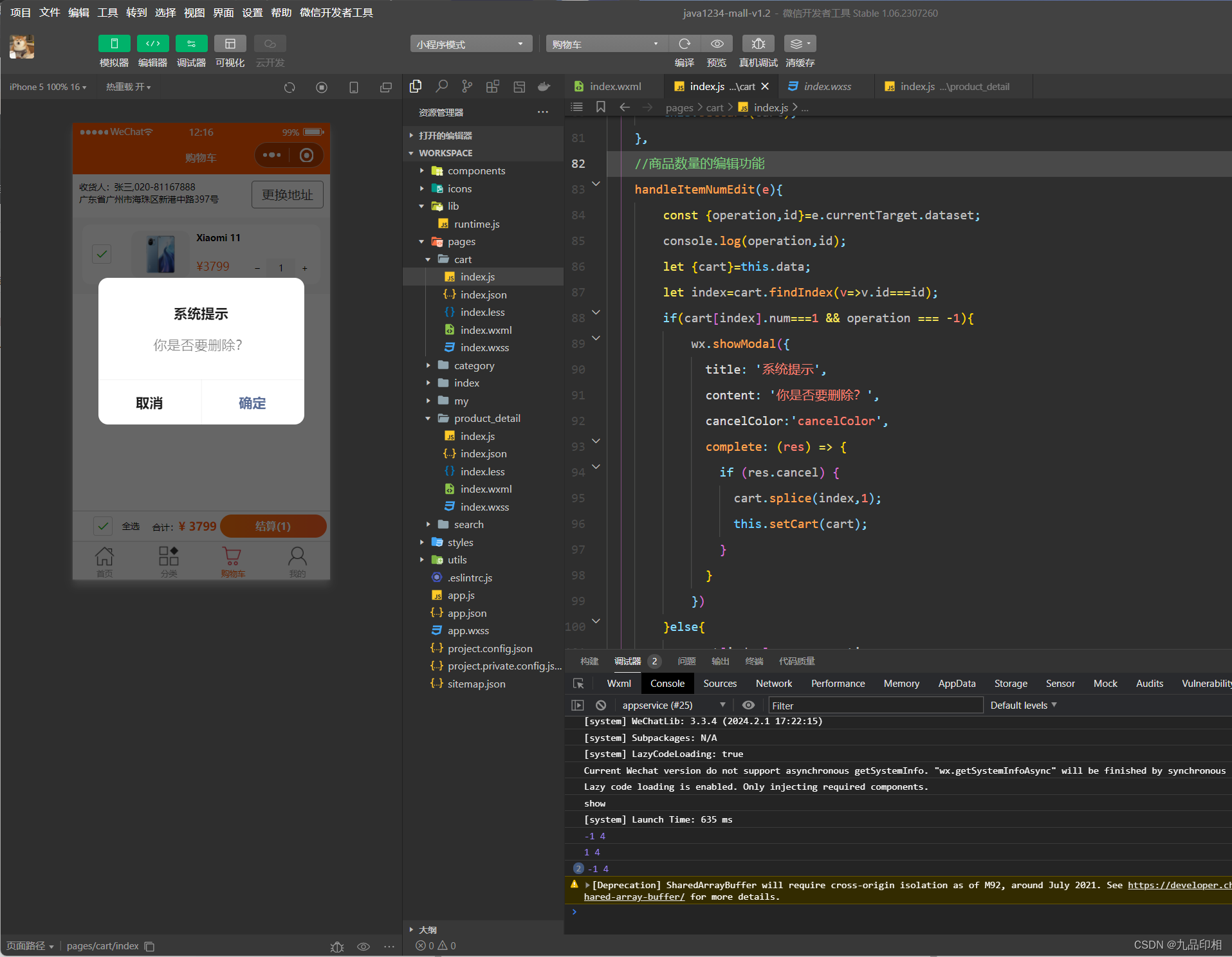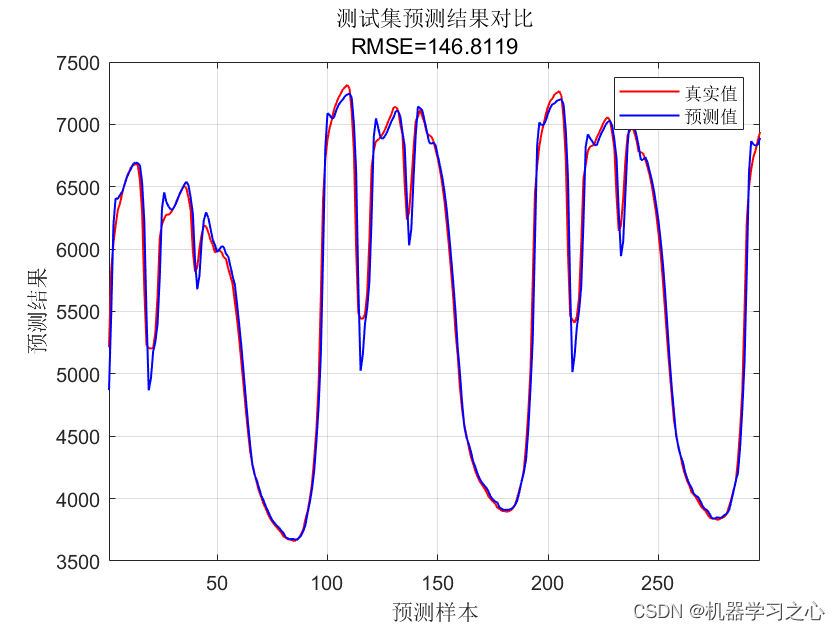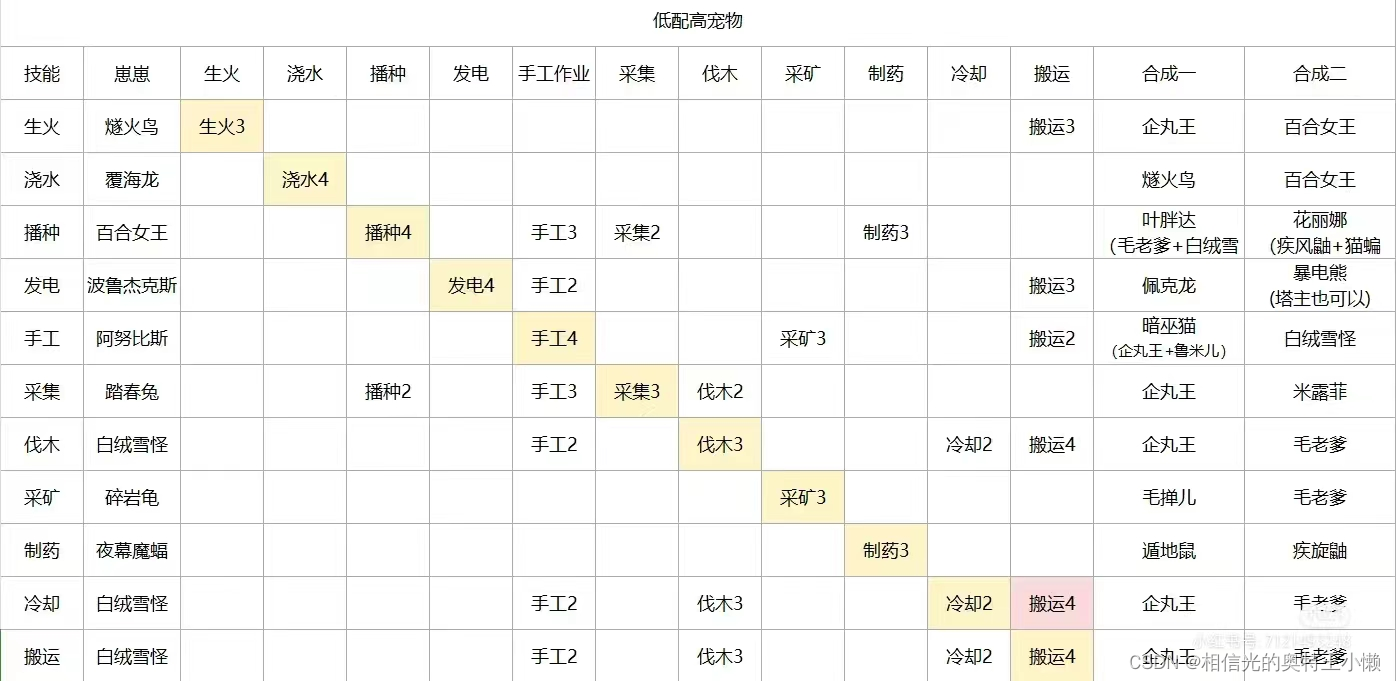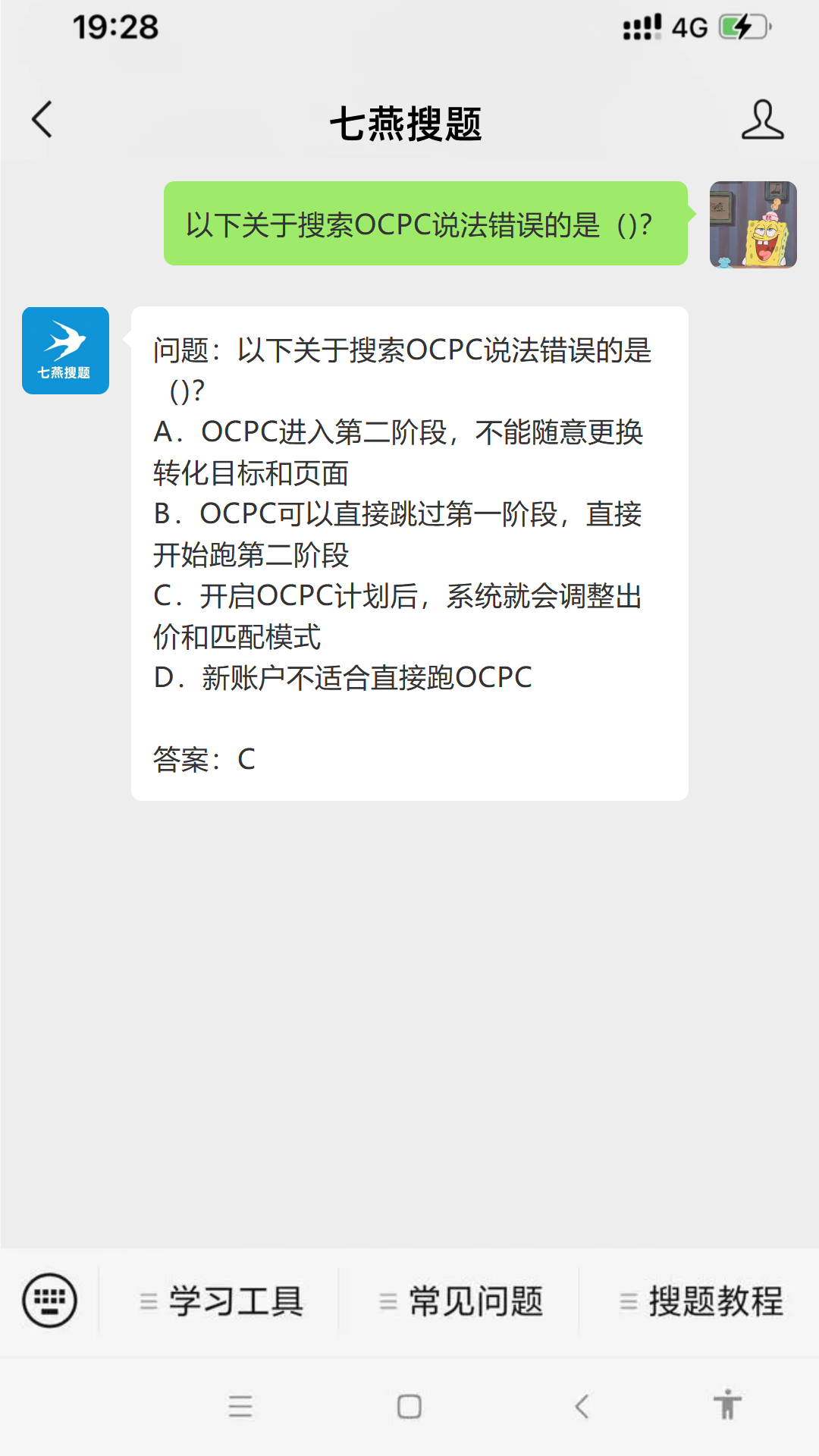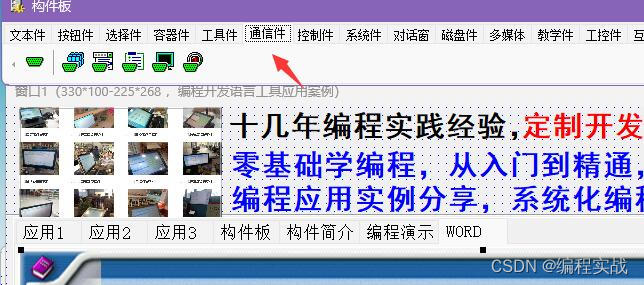文章目录
- 4. 几个经典的笔试题
- 4.1 题目1
- 4.2 题目2
- 4.3 题目3
- 4.4 题目4
- 5. C/C++程序的内存开辟
- 6. 动态通讯录
- 7. 柔性数组
- 7.1 柔性数组的特点
- 7.2 柔性数组的使用
- 7.3 柔性数组的优势
4. 几个经典的笔试题
4.1 题目1
#include <stdio.h>
#include <stdlib.h>
#include <string.h>
void GetMemory(char* p)
{
p = (char*)malloc(100);
}
void Test(void)
{
char* str = NULL;
GetMemory(str);
strcpy(str, "hello world");
printf(str);
}
int main()
{
Test();
return 0;
}
在调用GetMemory函数时,传的是str的值,p是str的一份临时拷贝,p里面放的也是NULL,接着,把malloc开辟空间的地址给了p,但是str还是NULL,那么strcpy中的str就是NULL,就会对空指针进行解引用操作;同时,动态申请的内存空间没有释放,存在内存泄漏的问题(而且出了GetMemory函数之后想释放也释放不了,因为p所在的那块内存空间已经被销毁了,已经还给操作系统了)。
注:
- 传变量本身就是传值,传变量的地址才叫传址
- printf(“hello world”)并不是把"hello world"这个字符串传给了printf这个函数,而是传的’h’的地址,所以printf(str)这个写法没有问题
可以这样修改:
#include <stdio.h>
#include <stdlib.h>
#include <string.h>
void GetMemory(char** p)
{
*p = (char*)malloc(100);
}
void Test(void)
{
char* str = NULL;
GetMemory(&str);
strcpy(str, "hello world");
printf(str);
//释放
free(str);
str = NULL;
}
int main()
{
Test();
return 0;
}
4.2 题目2
#include <stdio.h>
#include <stdlib.h>
char* GetMemory(void)
{
char p[] = "hello world";
return p;
}
void Test(void)
{
char* str = NULL;
str = GetMemory();
printf(str);
}
int main()
{
Test();
return 0;
}
这里的str确实存了数组首元素的地址,但是p这个数组出了GetMemory这个函数就被销毁了,str变成了野指针,它指向的空间里的内容变成了随机值,所以打印出来就是随机值(这里也相当于是非法访问了)
可以这样修改:
#include <stdio.h>
#include <stdlib.h>
char* GetMemory(void)
{
static char p[] = "hello world";
//char* p = "hello world";//"hello world"是常量字符串,放在代码段,程序结束才会销毁;p接收的是'h'的地址,所以str里放的是'h'的地址,出了作用域p被销毁了并不影响str找到"hello world"
//以上两种写法都可以
return p;
}
void Test(void)
{
char* str = NULL;
str = GetMemory();
printf(str);
}
int main()
{
Test();
return 0;
}
总结: 这属于返回栈空间地址的问题
我们可以简化一下这个问题:
#include <stdio.h>
int* test()
{
int a = 10;
return &a;
}
int main()
{
int* p = test();
printf("%d\n", *p);
return 0;
}
这里的p就变成了野指针,但是有可能还能打印出10,这是因为可能这块空间还没有被用掉
如果改成这样:
#include <stdio.h>
int* test()
{
int a = 10;
return &a;
}
int main()
{
int* p = test();
printf("*p=");
printf("%d\n", *p);
return 0;
}
这样就打印不出来10了,这里涉及到函数栈帧:
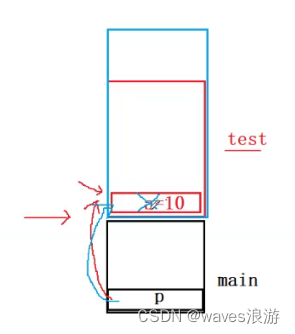
当只有第二个printf语句时,我在test函数返回后迅速先通过*p来找到10,然后开辟了printf的函数栈帧来打印它,所以还有可能打印出10;但是我再前面再加了一个printf后,第一个printf函数开辟的空间覆盖了原来test函数开辟的空间,所以第二个printf就打印不出10了
4.3 题目3
#include <stdio.h>
#include <stdlib.h>
#include <string.h>
void GetMemory(char** p, int num)
{
*p = (char*)malloc(num);
}
void Test(void)
{
char* str = NULL;
GetMemory(&str, 100);
strcpy(str, "hello");
printf(str);
}
int main()
{
Test();
return 0;
}
问题在于忘记释放
应该这样修改:
#include <stdio.h>
#include <stdlib.h>
#include <string.h>
void GetMemory(char** p, int num)
{
*p = (char*)malloc(num);
}
void Test(void)
{
char* str = NULL;
GetMemory(&str, 100);
strcpy(str, "hello");
printf(str);
free(str);
str = NULL;
}
int main()
{
Test();
return 0;
}
4.4 题目4
#include <stdio.h>
#include <stdlib.h>
#include <string.h>
void Test(void)
{
char* str = (char*)malloc(100);
strcpy(str, "hello");
free(str);
if (str != NULL)
{
strcpy(str, "world");
printf(str);
}
}
int main()
{
Test();
return 0;
}
问题在于free完后没有把str置为空指针,导致str变为野指针,非法访问内存了
应该这样修改:
#include <stdio.h>
#include <stdlib.h>
#include <string.h>
void Test(void)
{
char* str = (char*)malloc(100);
strcpy(str, "hello");
free(str);
str = NULL;
if (str != NULL)
{
strcpy(str, "world");
printf(str);
}
}
int main()
{
Test();
return 0;
}
5. C/C++程序的内存开辟

注: 数据段也就是静态区
从图中我们也可以得知,一个全局变量和一个局部变量的地址其实离得是比较远的:
#include <stdio.h>
int d = 200;
int main()
{
int a = 10;
int b = 20;
static int c = 100;
printf("&a = %p\n", &a);//&a = 00CFFB6C
printf("&b = %p\n", &b);//&b = 00CFFB60
printf("&c = %p\n", &c);//&c = 0076A038
printf("&d = %p\n", &d);//&d = 0076A034
return 0;
}
C/C++程序内存分配的几个区域:
- 栈区(stack):在执行函数时,函数内局部变量的存储单元都可以在栈上创建,函数执行结束时这些存储单元自动被释放。栈内存分配运算内置于处理器的指令集中,效率很高,但是分配的内存容量有限。 栈区主要存放运行函数而分配的局部变量、函数参数、返回数据、返回地址等。
- 堆区(heap):一般由程序员分配释放, 若程序员不释放,程序结束时可能由OS(operate system)回收 ,分配方式类似于链表。
- 数据段(静态区)(static)存放全局变量、静态数据,程序结束后由系统释放。
- 代码段:存放函数体(类成员函数和全局函数)的二进制代码。
有了这幅图,我们就可以更好的理解在初识C语言中讲的static关键字修饰局部变量的例子了:
实际上普通的局部变量是在栈区分配空间的,栈区的特点是在上面创建的变量出了作用域就销毁,但是被static修饰的变量存放在数据段(静态区),数据段的特点是在上面创建的变量,直到程序结束才销毁,所以生命周期变长。
6. 动态通讯录
我们对之前写的通讯里进行一个改造:
- 通讯录的空间不是固定的,大小是可以调整的
- 默认能放3个人的信息,如果不够,就每次增加2个人的信息
首先,我们要改变一下通讯录这个结构体:
//contact.h
typedef struct Contact
{
PeoInfo* data;//指向了存放数据的空间
int sz;//记录的是当前放的有效元素的个数
int capacity;//通讯录当前的最大容量
}Contact;
接着是初始化通讯录:
//contact.c
void InitContact(Contact* pc)
{
assert(pc);
pc->data = (PeoInfo*)malloc(DEFAULT_SZ * sizeof(PeoInfo));//DEFAULT_SZ是我定义的默认大小:3
if (NULL == pc->data)
{
perror("InitContact");
return;
}
pc->sz = 0;
pc->capacity = DEFAULT_SZ;
}
然后是增加联系人:
//contact.c
int CheckCapacity(Contact* pc)
{
if (pc->sz == pc->capacity)
{
PeoInfo* ptr = (PeoInfo*)realloc(pc->data, (pc->capacity + INC_SZ) * sizeof(PeoInfo));
if (NULL == ptr)
{
perror("CheckCapacity");
return 0;
}
else
{
pc->data = ptr;
pc->capacity += INC_SZ;
printf("增容成功\n");
return 1;
}
}
return 1;
}
void AddContact(Contact* pc)
{
assert(pc);
if (0 == CheckCapacity(pc))
{
return;
}
printf("请输入名字:>");
scanf("%s", pc->data[pc->sz].name);
printf("请输入年龄:>");
scanf("%d", &(pc->data[pc->sz].age));
printf("请输入性别:>");
scanf("%s", pc->data[pc->sz].sex);
printf("请输入电话:>");
scanf("%s", pc->data[pc->sz].tele);
printf("请输入地址:>");
scanf("%s", pc->data[pc->sz].addr);
pc->sz++;
printf("成功增加联系人\n");
}
最后用完通讯录要对它进行释放:
//contact.c
void DestroyContact(Contact* pc)
{
free(pc->data);
pc->data = NULL;
pc->capacity = 0;
pc->sz = 0;
}
其他通讯录的功能不需要改动,完整代码如下:
//contact.h
#include <string.h>
#include <assert.h>
#include <stdio.h>
#include <stdlib.h>
#define MAX 100
#define MAX_NAME 20
#define MAX_SEX 5
#define MAX_TELE 12
#define MAX_ADDR 30
#define DEFAULT_SZ 3
#define INC_SZ 2
enum OPTION
{
EXIT,//0
ADD,
DEL,
SEARCH,
MODIFY,
SHOW,
SORT
};
enum SELECT
{
NAME = 1,
AGE
};
//类型的声明
typedef struct PeoInfo
{
char name[MAX_NAME];
int age;
char sex[MAX_SEX];
char tele[MAX_TELE];
char addr[MAX_ADDR];
}PeoInfo;
//通讯录
//动态版本
typedef struct Contact
{
PeoInfo* data;//指向了存放数据的空间
int sz;//记录的是当前放的有效元素的个数
int capacity;//通讯录当前的最大容量
}Contact;
//函数声明
//初始化通讯录
void InitContact(Contact* pc);
//增加联系人
void AddContact(Contact* pc);
//显示所有联系人的信息
void ShowContact(const Contact* pc);
//删除指定联系人
void DelContact(Contact* pc);
//查找指定联系人
void SearchContact(const Contact* pc);
//修改指定联系人
void ModifyContact(Contact* pc);
//排序功能
void SortContact(Contact* pc);
void DestroyContact(Contact* pc);
//contact.c
#include "contact.h"
//动态版本
void InitContact(Contact* pc)
{
assert(pc);
pc->data = (PeoInfo*)malloc(DEFAULT_SZ * sizeof(PeoInfo));
if (NULL == pc->data)
{
perror("InitContact");
return;
}
pc->sz = 0;
pc->capacity = DEFAULT_SZ;
}
//动态版本
int CheckCapacity(Contact* pc)
{
if (pc->sz == pc->capacity)
{
PeoInfo* ptr = (PeoInfo*)realloc(pc->data, (pc->capacity + INC_SZ) * sizeof(PeoInfo));
if (NULL == ptr)
{
perror("CheckCapacity");
return 0;
}
else
{
pc->data = ptr;
pc->capacity += INC_SZ;
printf("增容成功\n");
return 1;
}
}
return 1;
}
void AddContact(Contact* pc)
{
assert(pc);
if (0 == CheckCapacity(pc))
{
return;
}
printf("请输入名字:>");
scanf("%s", pc->data[pc->sz].name);
printf("请输入年龄:>");
scanf("%d", &(pc->data[pc->sz].age));
printf("请输入性别:>");
scanf("%s", pc->data[pc->sz].sex);
printf("请输入电话:>");
scanf("%s", pc->data[pc->sz].tele);
printf("请输入地址:>");
scanf("%s", pc->data[pc->sz].addr);
pc->sz++;
printf("成功增加联系人\n");
}
void ShowContact(const Contact* pc)
{
assert(pc);
int i = 0;
//打印列标题
printf("%-20s\t%-4s\t%-5s\t%-12s\t%-30s\n", "名字", "年龄", "性别", "电话", "地址");
//打印数据
for (i = 0; i < pc->sz; i++)
{
printf("%-20s\t%-4d\t%-5s\t%-12s\t%-30s\n",
pc->data[i].name,
pc->data[i].age,
pc->data[i].sex,
pc->data[i].tele,
pc->data[i].addr);
}
}
static int FindByName(const Contact* pc, char name[])
{
int i = 0;
for (i = 0; i < pc->sz; i++)
{
if (0 == strcmp(pc->data[i].name, name))
{
return i;//找到了
}
}
return -1;//找不到
}
void DelContact(Contact* pc)
{
assert(pc);
if (0 == pc->sz)
{
printf("通讯录为空,无法删除\n");
return;
}
char name[MAX_NAME] = { 0 };
//删除
printf("请输入要删除的人的名字:>");
scanf("%s", name);
//找到要删除的人
int del = FindByName(pc, name);
if (-1 == del)
{
printf("要删除的人不存在\n");
return;
}
int i = 0;
//删除坐标为del的联系人
for (i = del; i < pc->sz - 1; i++)
{
pc->data[i] = pc->data[i + 1];
}
pc->sz--;
printf("成功删除联系人\n");
}
void SearchContact(const Contact* pc)
{
assert(pc);
char name[MAX_NAME] = { 0 };
printf("请输入要查找人的名字:>");
scanf("%s", name);
int pos = FindByName(pc, name);
if (-1 == pos)
{
printf("要查找的人不存在\n");
}
else
{
//打印列标题
printf("%-20s\t%-4s\t%-5s\t%-12s\t%-30s\n", "名字", "年龄", "性别", "电话", "地址");
//打印数据
printf("%-20s\t%-4d\t%-5s\t%-12s\t%-30s\n",
pc->data[pos].name,
pc->data[pos].age,
pc->data[pos].sex,
pc->data[pos].tele,
pc->data[pos].addr);
}
}
void ModifyContact(Contact* pc)
{
assert(pc);
char name[MAX_NAME] = { 0 };
printf("请输入要修改人的名字:>");
scanf("%s", name);
int pos = FindByName(pc, name);
if (-1 == pos)
{
printf("要修改的人不存在\n");
}
else
{
printf("请输入名字:>");
scanf("%s", pc->data[pos].name);
printf("请输入年龄:>");
scanf("%d", &(pc->data[pos].age));
printf("请输入性别:>");
scanf("%s", pc->data[pos].sex);
printf("请输入电话:>");
scanf("%s", pc->data[pos].tele);
printf("请输入地址:>");
scanf("%s", pc->data[pos].addr);
printf("修改成功\n");
}
}
void select()
{
printf("********************************\n");
printf("***** 1. name 2. age *****\n");
printf("********************************\n");
}
int cmp_by_name(const void* p1, const void* p2)
{
return strcmp(((PeoInfo*)p1)->name, ((PeoInfo*)p2)->name);
}
int cmp_by_age(const void* p1, const void* p2)
{
return ((PeoInfo*)p1)->age - ((PeoInfo*)p2)->age;
}
void SortContact(Contact* pc)
{
assert(pc);
if (0 == pc->sz)
{
printf("通讯录为空,无法排序\n");
return;
}
int input = 0;
do
{
select();
printf("请选择按何种方式进行排序:>");
scanf("%d", &input);
switch (input)
{
case NAME:
qsort(pc->data, pc->sz, sizeof(pc->data[0]), cmp_by_name);
printf("排序成功\n");
break;
case AGE:
qsort(pc->data, pc->sz, sizeof(pc->data[0]), cmp_by_age);
printf("排序成功\n");
break;
default:
printf("选择错误,重新选择\n");
break;
}
} while (input != NAME && input != AGE);
}
void DestroyContact(Contact* pc)
{
free(pc->data);
pc->data = NULL;
pc->capacity = 0;
pc->sz = 0;
}
//test.c
#include "contact.h"
void menu()
{
printf("********************************\n");
printf("***** 1. add 2. del *****\n");
printf("***** 3. search 4. modify *****\n");
printf("***** 5. show 6. sort *****\n");
printf("***** 0. exit *****\n");
printf("********************************\n");
}
void test()
{
int input = 0;
//首先得有通讯录
Contact con;
InitContact(&con);
do
{
menu();
printf("请选择:>");
scanf("%d", &input);
switch (input)
{
case ADD:
AddContact(&con);
break;
case DEL:
DelContact(&con);
break;
case SEARCH:
SearchContact(&con);
break;
case MODIFY:
ModifyContact(&con);
break;
case SHOW:
ShowContact(&con);
break;
case SORT:
//排序
//按照名字排序?
//按照年龄排序?
SortContact(&con);
break;
case EXIT:
DestroyContact(&con);
printf("退出通讯录\n");
break;
default:
printf("选择错误,重新选择\n");
break;
}
} while (input);
}
int main()
{
test();
return 0;
}
7. 柔性数组
也许你从来没有听说过柔性数组(flexible array)这个概念,但是它确实是存在的。C99 中,结构中的最后一个元素允许是未知大小的数组,这就叫做『柔性数组』成员。
7.1 柔性数组的特点
- 结构中的柔性数组成员前面必须至少一个其他成员。
- sizeof 返回的这种结构大小不包括柔性数组的内存。
- 包含柔性数组成员的结构用malloc ()函数进行内存的动态分配,并且分配的内存应该大于结构的大小,以适应柔性数组的预期大小。
7.2 柔性数组的使用
#include <stdio.h>
#include <stdlib.h>
struct S
{
int n;
//int arr[0];//这两种写法都可以
int arr[];//柔性数组
};
int main()
{
//printf("%d\n", sizeof(struct S));//4
struct S* ps = (struct S*)malloc(sizeof(struct S) + 40);
if (NULL == ps)
{
perror("malloc");
return 1;
}
ps->n = 100;
int i = 0;
for (i = 0; i < 10; i++)
{
ps->arr[i] = i + 1;
}
//空间不够,需要增容
struct S* ptr = (struct S*)realloc(ps, sizeof(struct S) + 60);
if (NULL == ptr)
{
perror("realloc");
return 1;
}
ps->n = 15;
for (i = 0; i < 15; i++)
{
printf("%d\n", ps->arr[i]);
}
//释放
free(ps);
ps = NULL;
return 0;
}
7.3 柔性数组的优势
我们不使用柔性数组也可以实现上述功能:
#include <stdio.h>
#include <stdlib.h>
struct S
{
int n;
int* arr;
};
int main()
{
struct S* ps = (struct S*)malloc(sizeof(struct S));
if (NULL == ps)
{
perror("malloc->ps");
return 1;
}
ps->n = 100;
ps->arr = (int*)malloc(40);
if (NULL == ps->arr)
{
perror("malloc->arr");
return 1;
}
int i = 0;
for (i = 0; i < 10; i++)
{
ps->arr[i] = i + 1;//1 2 3 4 5 6 7 8 9 10
}
//调整
int* ptr = (int*)realloc(ps->arr, 60);
if (ptr != NULL)
{
ps->arr = ptr;
}
else
{
perror("realloc");
return 1;
}
//打印
for (i = 0; i < 15; i++)
{
printf("%d\n", ps->arr[i]);
}
//释放
free(ps->arr);
ps->arr = NULL;
free(ps);
ps = NULL;
return 0;
}
那么柔性数组的优势是什么呢?
- 使用柔性数组只用了一次malloc就解决问题了,方便内存释放。
如果我们的代码是在一个给别人用的函数中,你在里面做了二次内存分配,并把整个结构体返回给用户。用户调用free可以释放结构体,但是用户并不知道这个结构体内的成员也需要free,所以你不能指望用户来发现这个事。所以,如果我们把结构体的内存以及其成员要的内存一次性分配好了,并返回给用户一个结构体指针,用户做一次free就可以把所有的内存也给释放掉。
- 如果你在内存空间中多次开辟空间,内存碎片(内存和内存之间留下的缝)就越多,这些内存碎片就可能不能被很好地利用,内存的利用率就越低;同时,访问速度也会变低。
连续的内存有益于提高访问速度,也有益于减少内存碎片。(其实,我个人觉得也没多高了,反正你跑不了要用做偏移量的加法来寻址)
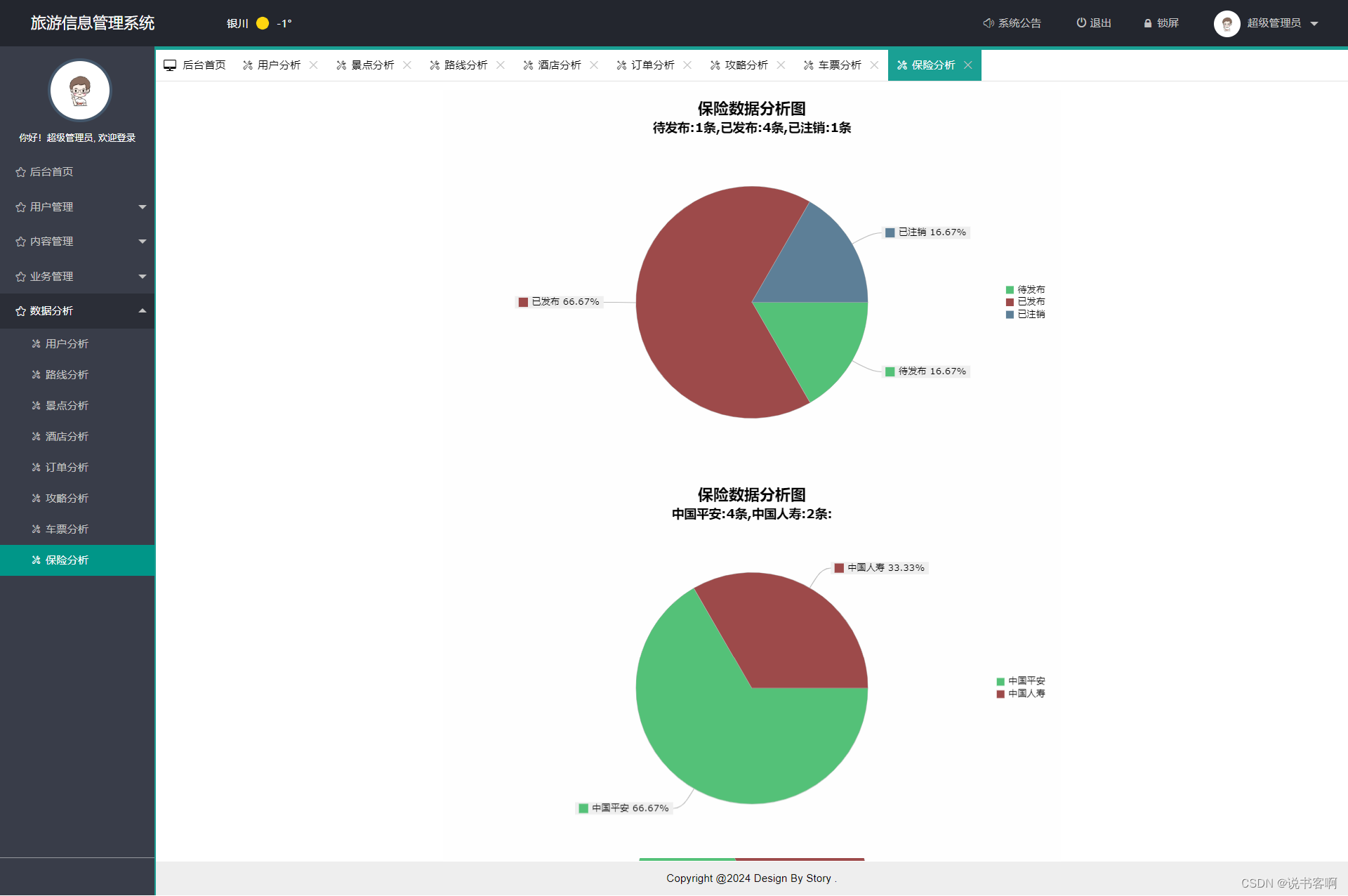

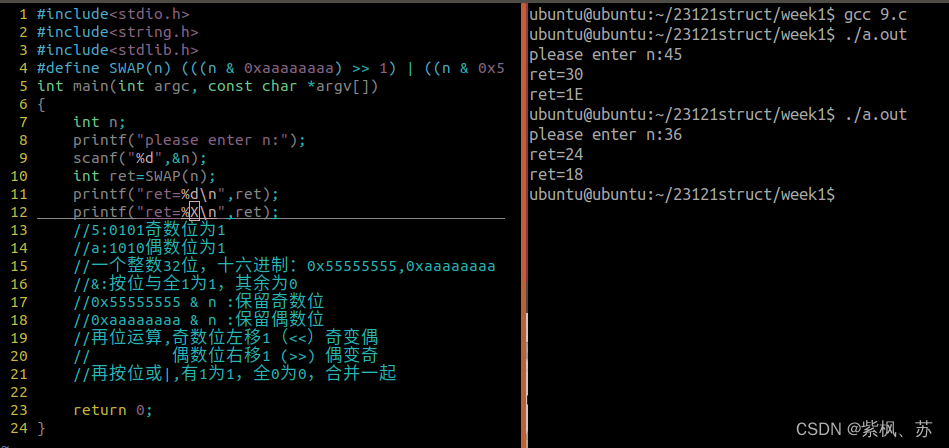


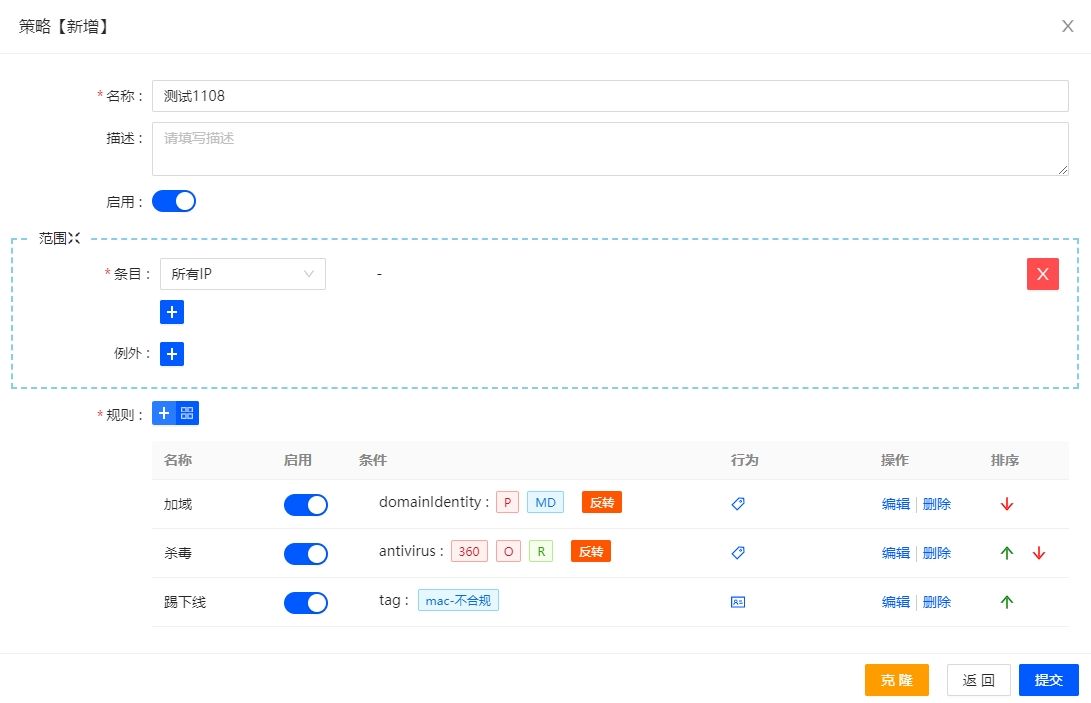
![java---查找算法(二分查找,插值查找,斐波那契[黄金分割查找] )-----详解 (ᕑᗢᓫ∗)˒](https://img-blog.csdnimg.cn/direct/1e03076b431342ce958728c48bab2257.webp)
